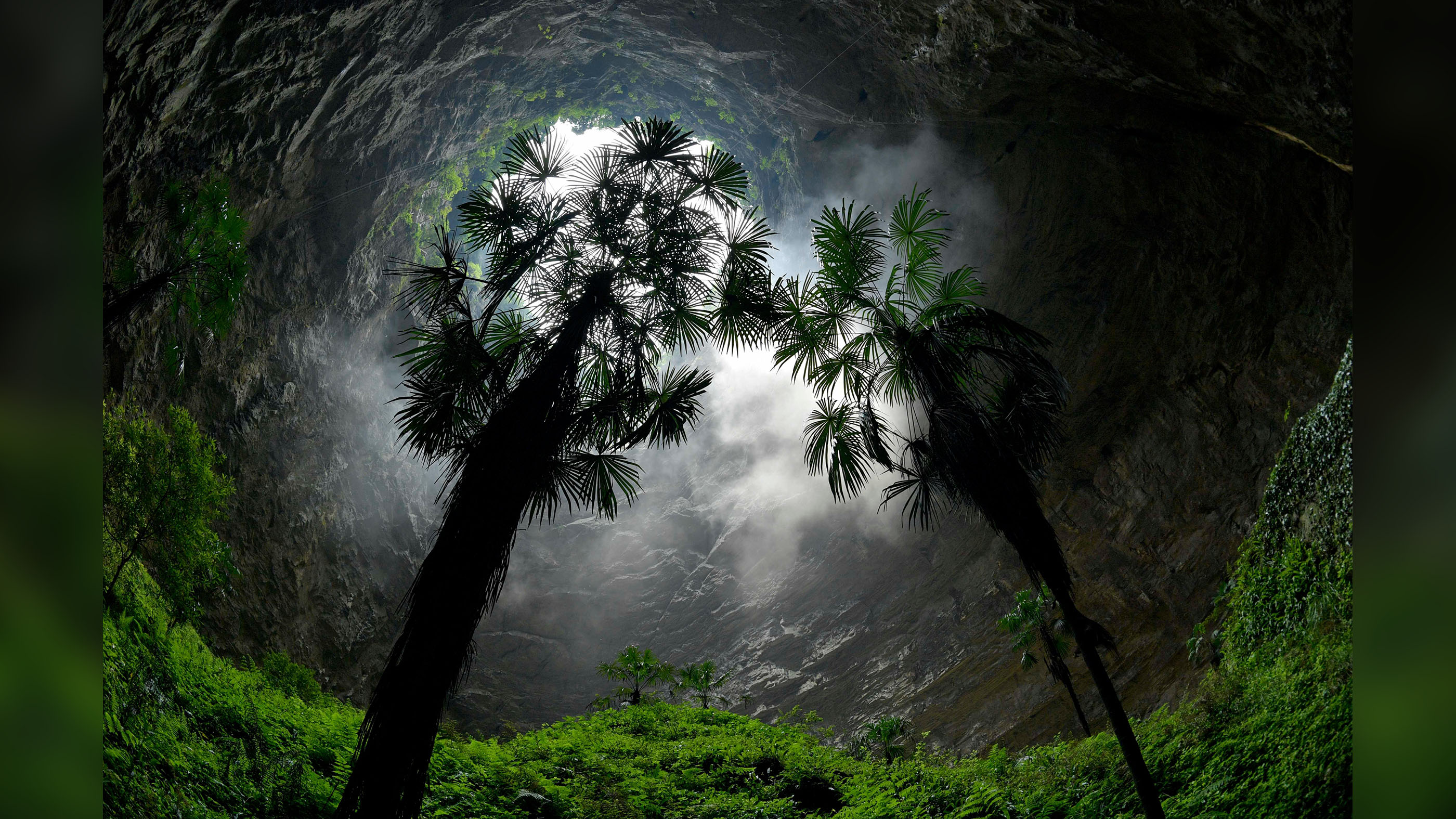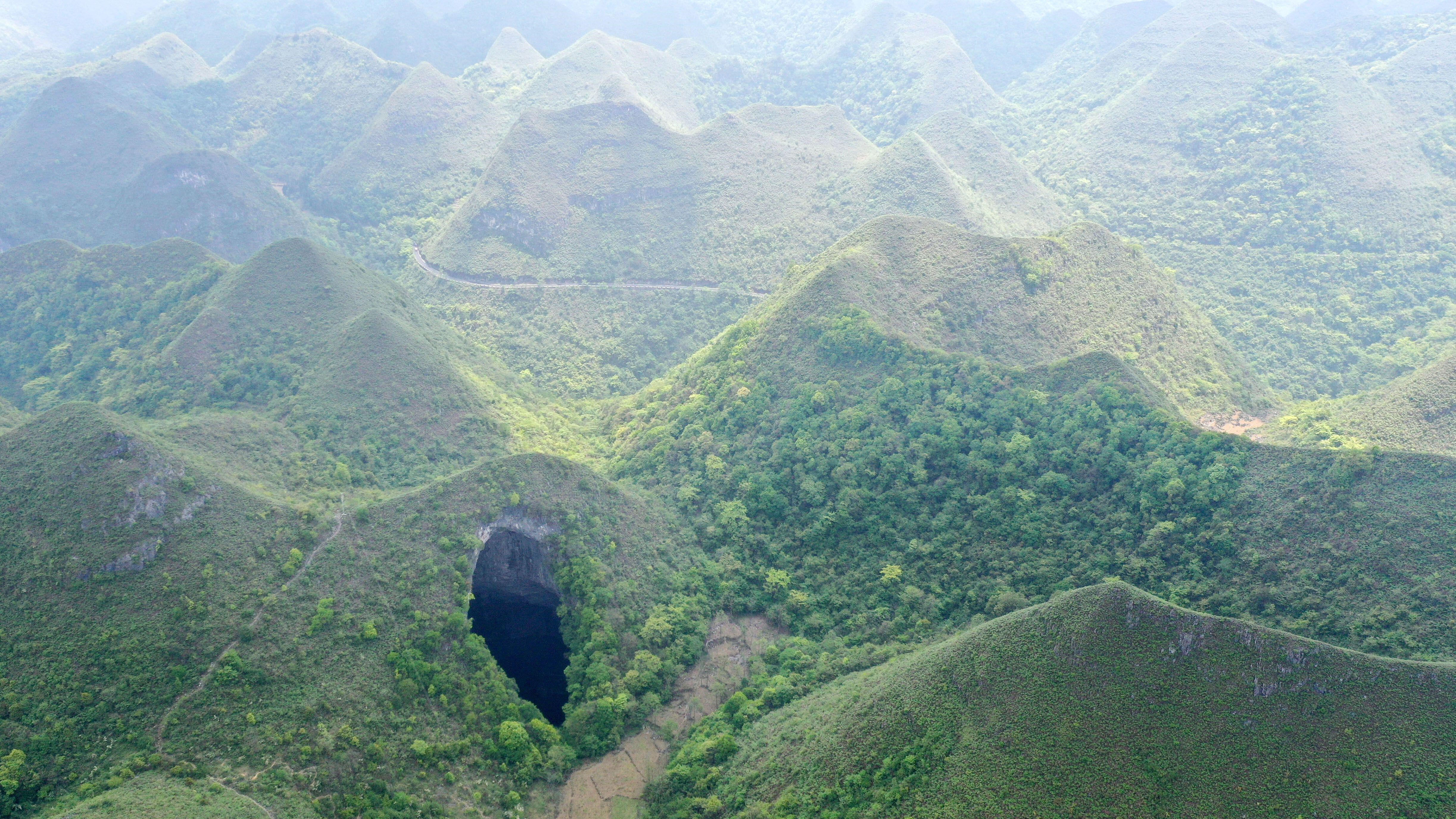
Name: Tiankeng, or "heavenly pits"
Location: Guizhou, Guangxi, Yunnan and Chongqing in southwestern China
Coordinates: 24.853407656078527, 106.74287500000897
Why it's incredible: China's enormous sinkholes make the landscape look like someone has taken a hole punch to it.
Take one look at the giant sinkholes that pockmark China's southwestern regions and it's easy to see why they are dubbed "tiankeng" — a Mandarin word meaning "heavenly pits." Not only do the sinkholes look like they were punched out of the landscape with a cookie cutter, they also harbor primitive forests and pristine ecosystems, according to the UNESCO Courier.
Southwestern China is home to karst landscapes — limestone formations that are highly prone to dissolution. Over hundreds of thousands of years, rainwater trickling down through the soil made its way into the bedrock and gradually eroded the limestone. Rivers of slightly acidic water widened cracks into tunnels and caves that eventually could no longer prop up the rock ceiling. The ceilings therefore collapsed to the bottom, opening up the enormous sinkholes.
China's tiankeng are unique, according to Zhu Xuewen, a researcher at the Institute of Karst Geology at the Chinese Academy of Geological Sciences.
Related: Deepest blue hole in the world discovered, with hidden caves and tunnels believed to be inside
The heavenly pits are some of the largest sinkholes in the world — in particular Xiaozhai Tiankeng, located in Fengjie County in southern-central China, which is the deepest sinkhole on Earth. To qualify as a tiankeng, a sinkhole must measure at least 330 feet (100 meters) deep and wide, Xuewen told the Chinese state-owned magazine Sixth Tone. Tiankeng must also have steep sides and rivers — or the ghosts of ancient rivers — flowing along the bottom, Xuewen said. At Xiaozhai Tiankeng, for example, the rainy season feeds an underground river that snakes through a network of caves, according to the BBC.

China is home to around 200 tiankeng, which are mostly distributed from the central Shaanxi province down to the Guangxi Zhuang autonomous region in the southwest. Roughly one-third of the country consists of karst — the highest proportion of overall surface area of any country in the world — compared with just under one-fifth in the United States.
"Because of local differences in geology, climate and other factors, the way karst appears at the surface can be dramatically different," George Veni, a hydrogeologist specializing in karst terrains and the executive director of the National Cave and Karst Research Institute in the U.S., previously told Live Science. "So in China, you have this incredibly visually spectacular karst with enormous sinkholes and giant cave entrances and so forth. In other parts of the world you walk out on the karst and you really don't notice anything."
Despite their size, China's tiankeng can be hard to spot among the jagged mountains and lush forests that cover much of the southwestern part of the country. That's why dozens of them have only been discovered in recent years.
The most recent discovery was in May 2022 in Guangxi, which is part of a region designated as a UNESCO World Heritage site since 2007. A cave exploration team descended into the sinkhole, located near the village of Ping'e in Leye County, and found the pit measured 630 feet (192 m) deep and up to 1,004 feet (306 m) across. The find brought the number of known tiankeng in Leye to 30, according to the Xinhua news agency.
The bottom of the sinkhole harbored a primal forest with ancient trees that were up to 131 feet (40 m) tall. The undergrowth was dense and as high as a person's shoulder, Chen Lixin, who led the expedition team, told Xinhua.
"I wouldn't be surprised to know that there are species found in these caves that have never been reported or described by science until now," Lixin said.







